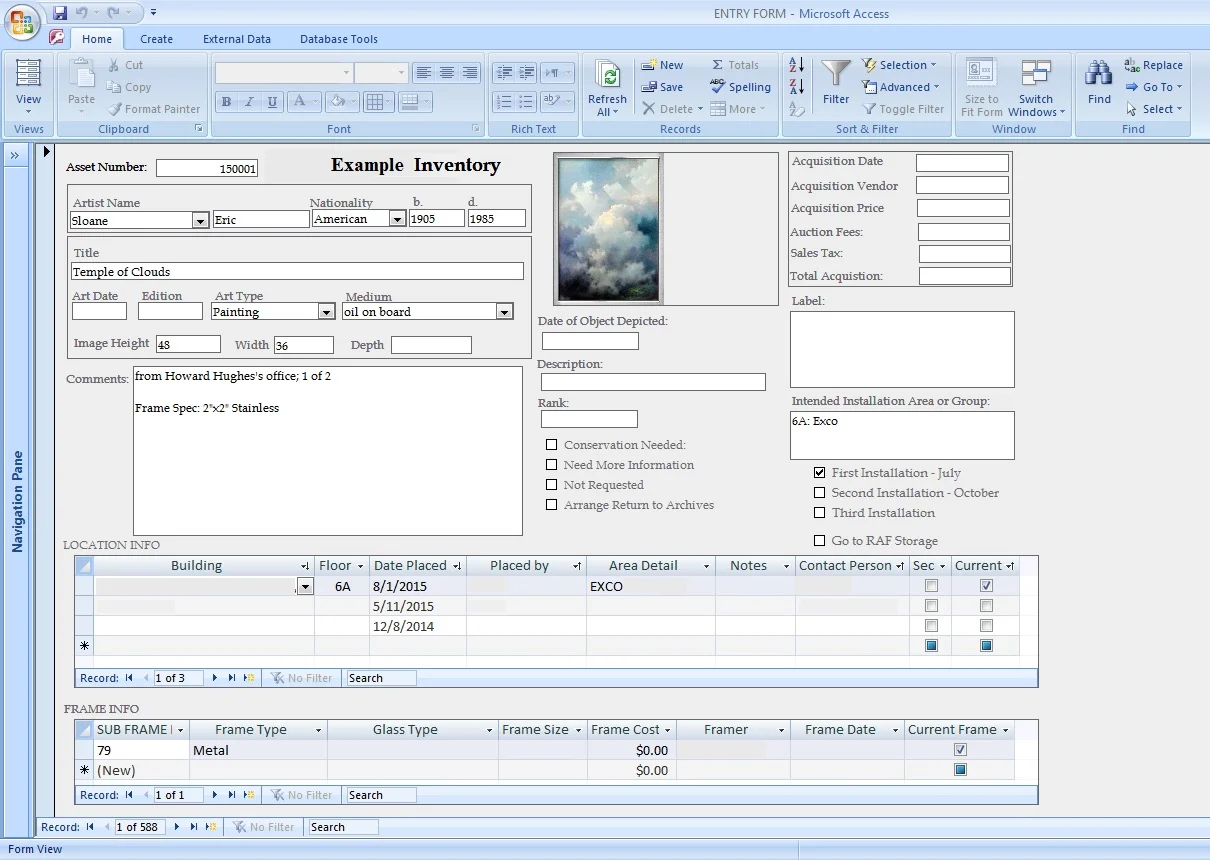Custom Artwork Inventory
Artwork inventory systems are a key tool for collection management. A well-constructed inventory is a resource for a wide variety of projects, including coordinating artwork relocations, calculating values for insurance, and generating documentation. We create custom-built databases for our client’s inventories to ensure we track and record every detail about their fine art assets.
Managing Artwork as an Asset
While part of an art collections’ value comes from its aesthetic impact, it’s also important to be mindful of an artwork’s financial value, especially in large collections. As a corporate art advisory, we encourage our clients to treat their artwork as an asset, and assigning each work a unique number is the starting point for building an inventory. Depending on the client’s preference, we can add barcodes or RFID chips to each object that matches their asset number. When scanned, the client can access each item’s unique catalog entry in their database.
Inventory systems also help with curatorial projects. It’s easy to generate a report based on artwork dimensions and style details, helping us quickly assess what artwork would be the best fit for a new or renovated space. Each entry includes documentation images, and can be classified by media, art historical movement, and frame style to efficiently determine which group of artwork will create a meaningful addition to a space.
Insurance Considerations
An important component of managing fine art assets includes maintaining records of each work’s provenance. While provenance is necessary to determine an artwork’s authenticity, the primary reason we are diligent about including it is to understand the financial history of the art. Knowing the source, price, and time period in which each artwork was purchased helps appraisers determine the work’s current value. Appraisal data is also included in the database, along with reports that calculate the total current value of the collection, and how the value has changed. We recommend updating appraisals every couple of years in order to maintain the correct amount insurance coverage; this often saves clients money, as most entities tend to overestimate and overpay for the insurance they require.
KEEPING TRACK OF ARTWORK LOCATIONS
Another advantage to maintaining an accurate database is its reliability for tracking artwork movements. In Chicago, there are dozens of new high-rises being constructed for commercial leases, and we use database reports to verify every artwork is accounted for during a relocation. Temporary movements can be included as well, such as transportation to be reframed or conserved. We note the dates of each movement, the staff members who assisted, and confirm their installation location when they return. Artwork in storage is accounted for as well, with notations about the climate-control specifications and how the artwork is packed or crated.
Ultimately, having a custom inventory system saves our clients money. We’re able to generate reports, analyze data, and coordinate logistics quickly and efficiently when we can utilize a company’s database to access artwork information.
. . .

